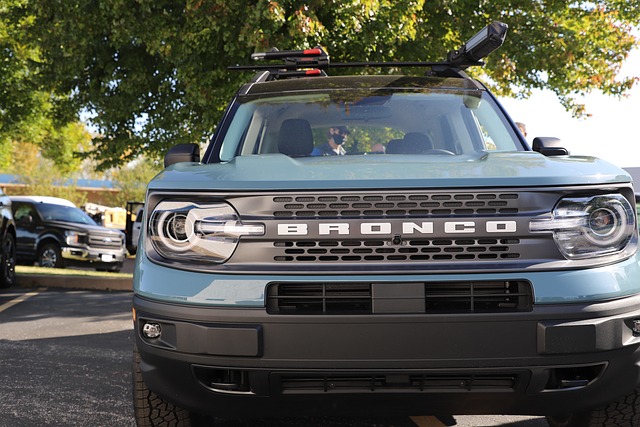Brownsville Jeep Wrangler Clubs prioritize rotor maintenance for safety and off-road performance. Rotors, made of cast iron or steel, feature slots for pads, creating friction for controlled deceleration. Selection based on intended use: solid for demanding conditions or vented for cooling during long drives. Larger rotors offer better heat dissipation but may require caliper upgrades. Installation involves proper tools, safety gear, alignment, and torque tightening. Regular maintenance, inspections, and fluid quality extend rotor life and enhance braking performance in challenging terrains navigated by Brownsville Jeep Wrangler Clubs.
“Explore the heart of your Jeep Wrangler’s braking system with a deep dive into rotors, essential for off-road enthusiasts in Brownsville Jeep Wrangler Clubs. This comprehensive guide unravels rotor basics, their crucial role in vehicle control, and how they affect performance. We demystify rotor types, highlighting the difference between solid and vented designs for optimal traction. Learn to choose the perfect rotor size, master installation tips, and discover maintenance secrets to extend your Wrangler’s braking life off-road. Join us as we navigate through common rotor issues encountered by fellow club members.”
- Understanding Jeep Wrangler Rotors: Basics and Function
- Types of Rotors: Solid vs Vented for Optimal Performance
- Choosing the Right Rotor Size for Your Wrangler
- Installation Tips: A Step-by-Step Guide for Club Members
- Maintenance and Care: Extending Rotor Lifespan Off-Road
- Troubleshooting Common Rotor Issues in Brownsville Jeep Clubs
Understanding Jeep Wrangler Rotors: Basics and Function
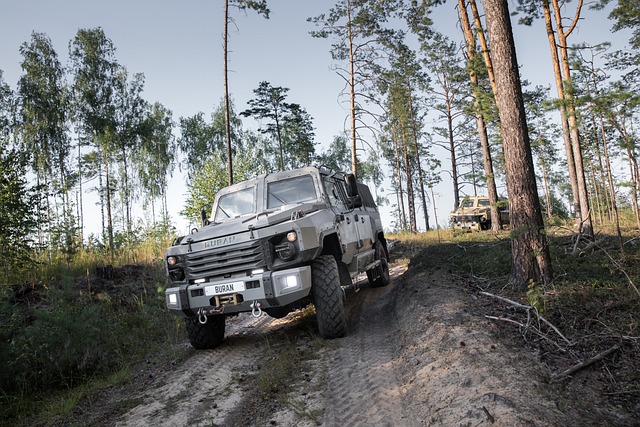
Jeep Wrangler rotors are an essential component in the braking system of your off-road vehicle. These discs, typically made of cast iron or steel, play a crucial role in slowing and stopping the wheels during driving. Understanding their basics and function is vital for any member of Brownsville Jeep Wrangler Clubs looking to maintain their vehicles’ safety and performance.
Each rotor consists of a flat, circular disc with a series of slots that accommodate brake pads. When the driver applies the brakes, hydraulic pressure pushes against these pads, creating friction on both sides of the rotor. This friction slows down the rotation of the wheels, allowing for controlled deceleration. The design of Jeep Wrangler rotors is optimized to handle the demanding off-road conditions often encountered by club members, ensuring reliable and effective braking power.
Types of Rotors: Solid vs Vented for Optimal Performance
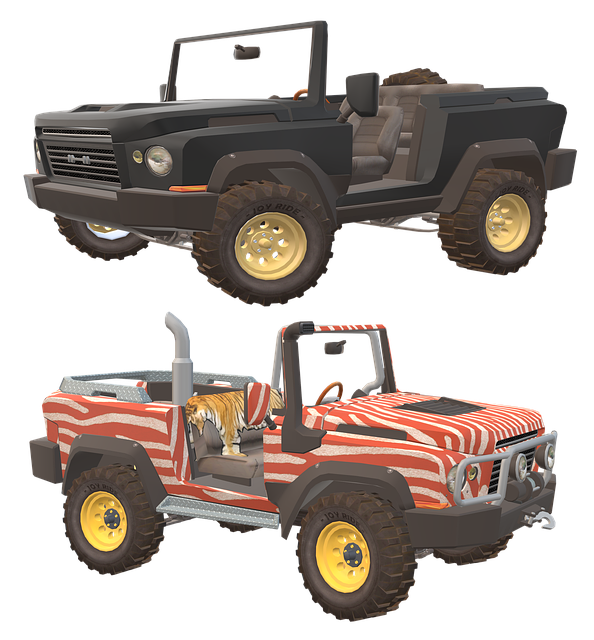
When it comes to choosing between solid and vented rotors for your Brownsville Jeep Wrangler, understanding the differences is key to optimal performance. Solid rotors are a uniform thickness throughout, offering consistent braking power and heat dissipation. This design suits vehicles that experience heavy stopping demands or are used for off-road adventures, as they can handle intense heat without warping.
Vented rotors, on the other hand, feature cool air channels that enhance their cooling capabilities. This makes them ideal for everyday driving conditions where consistent braking performance and reduced fade are crucial. While slightly lighter than solid rotors, vented options provide superior cooling benefits, ensuring your brakes remain efficient even during prolonged use, which is particularly relevant for members of Brownsville Jeep Wrangler clubs who often take their vehicles on long trail rides.
Choosing the Right Rotor Size for Your Wrangler
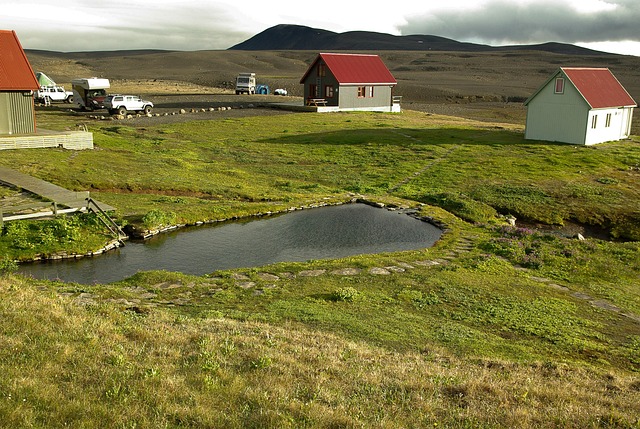
When customizing your Brownsville Jeep Wrangler, choosing the right rotor size is crucial for both performance and safety. The size of the rotors directly impacts braking efficiency and overall stopping power. For off-road adventures, larger rotors can provide better heat dissipation during intense trails, ensuring consistent braking performance even in demanding conditions. However, consider that bigger rotors might require upgrading your brake calipers and lines to accommodate their increased size.
Brownville Jeep Wrangler Clubs often become valuable resources for owners looking to fine-tune their vehicles. Consulting with fellow enthusiasts who have experience with various rotor sizes can offer insights into the ideal choice. Remember, the right rotor size enhances your Wrangler’s braking capabilities while aligning with your driving style and off-road needs.
Installation Tips: A Step-by-Step Guide for Club Members
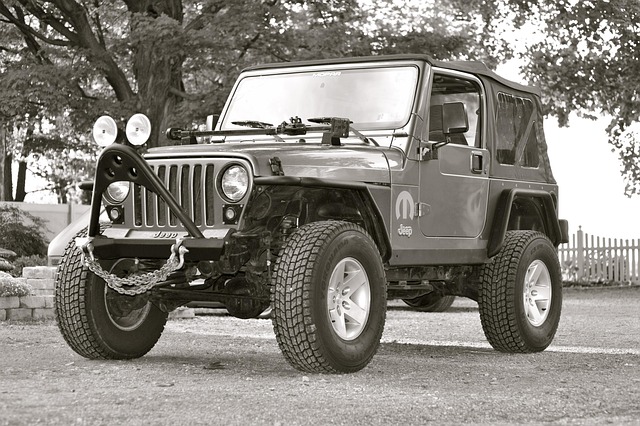
Installing rotors on your jeep is a task that every member of the Brownsville Jeep Wrangler Club should master. Here’s a step-by-step guide to help you navigate this process with ease. First, gather all necessary tools and parts, ensuring they are compatible with your Brownsville Jeep Wrangler model. Safety gear like gloves and safety glasses are essential to protect you from debris. Next, jack up your vehicle and secure it using wheel chocks for stability during the installation. Remove the old rotors carefully, taking note of their orientation for reference later. Clean the brake surface thoroughly to eliminate any rust or contaminants.
Now, align the new rotors with the brake pads, ensuring they are correctly positioned. Use a rotor positioning tool if available to guarantee accurate alignment. Place the new rotors onto the wheel bolts and start tightening them in a star pattern to ensure even pressure distribution. Once all rotors are installed, lower your vehicle and tighten the bolts again with a torque wrench to meet the manufacturer’s specifications. This meticulous approach ensures smooth braking performance for your Brownsville Jeep Wrangler Club adventures ahead.
Maintenance and Care: Extending Rotor Lifespan Off-Road
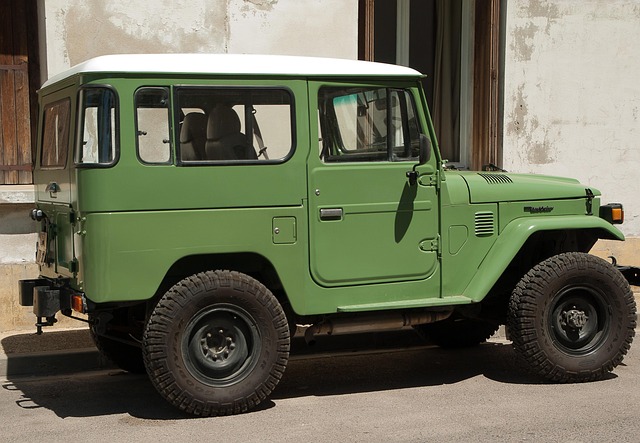
Extending the lifespan of your rotor is crucial for off-road enthusiasts, especially those who rely on their trusted Brownsville Jeep Wrangler Clubs for challenging trails. Regular maintenance plays a vital role in keeping rotors in top condition. Start by inspecting them after each trip, looking for signs of wear or damage. Keep an eye out for cracks, warping, or excessive corrosion, as these can impact performance and safety.
Proper cleaning is key; use specialized rotor cleaners to remove brake dust and grime buildup. Avoid using harsh chemicals or power washers, which could damage the rotor surface. Additionally, ensure your braking system is regularly bleeded to prevent air pockets, enhancing overall efficiency. Regular care not only extends rotor life but also contributes to better braking performance in the rugged terrain often encountered by Jeep Wrangler clubs.
Troubleshooting Common Rotor Issues in Brownsville Jeep Clubs

Brownsville Jeep Wrangler clubs often encounter common rotor issues that can disrupt their off-road adventures. One of the frequent problems is rotor warping, which can cause vibration and reduced braking performance. This issue might arise due to excessive heat, poor maintenance, or manufacturing defects. Members of these clubs can mitigate this by regularly inspecting rotors for signs of wear and ensuring proper cooling during intense drives.
Another common challenge is rotor fading, leading to decreased brake efficiency. Brownsville Jeep enthusiasts should be vigilant about using high-quality brake fluid and maintaining optimal hydraulic pressure. Regular cleaning and inspection can prevent build-up, ensuring the rotors retain their initial power and effectiveness. By addressing these issues promptly, members of the Brownsville Jeep Wrangler clubs can enhance safety and enjoy smoother, more secure rides during their outdoor excursions.
Rotors are a vital component of your Jeep Wrangler’s braking system, and understanding their types, sizes, and maintenance is crucial for optimal performance. For members of Brownsville Jeep Wrangler Clubs, choosing the right rotors, whether solid or vented, and following proper installation and care tips can significantly enhance safety and enjoyment during off-road adventures. By addressing common issues through troubleshooting, these clubs empower drivers to navigate rough terrains with confidence, ensuring their Wrangler’s brakes remain in top shape.
